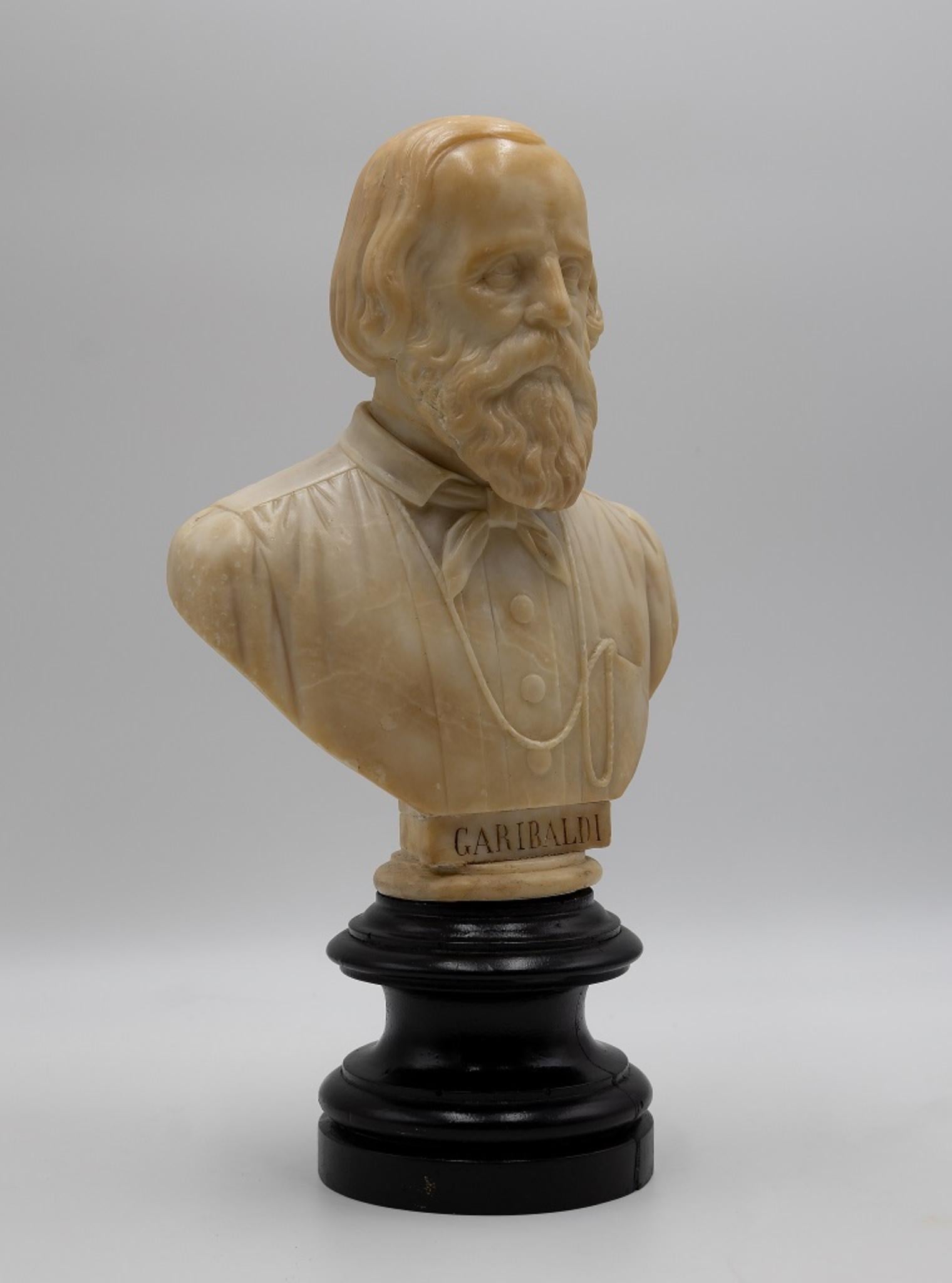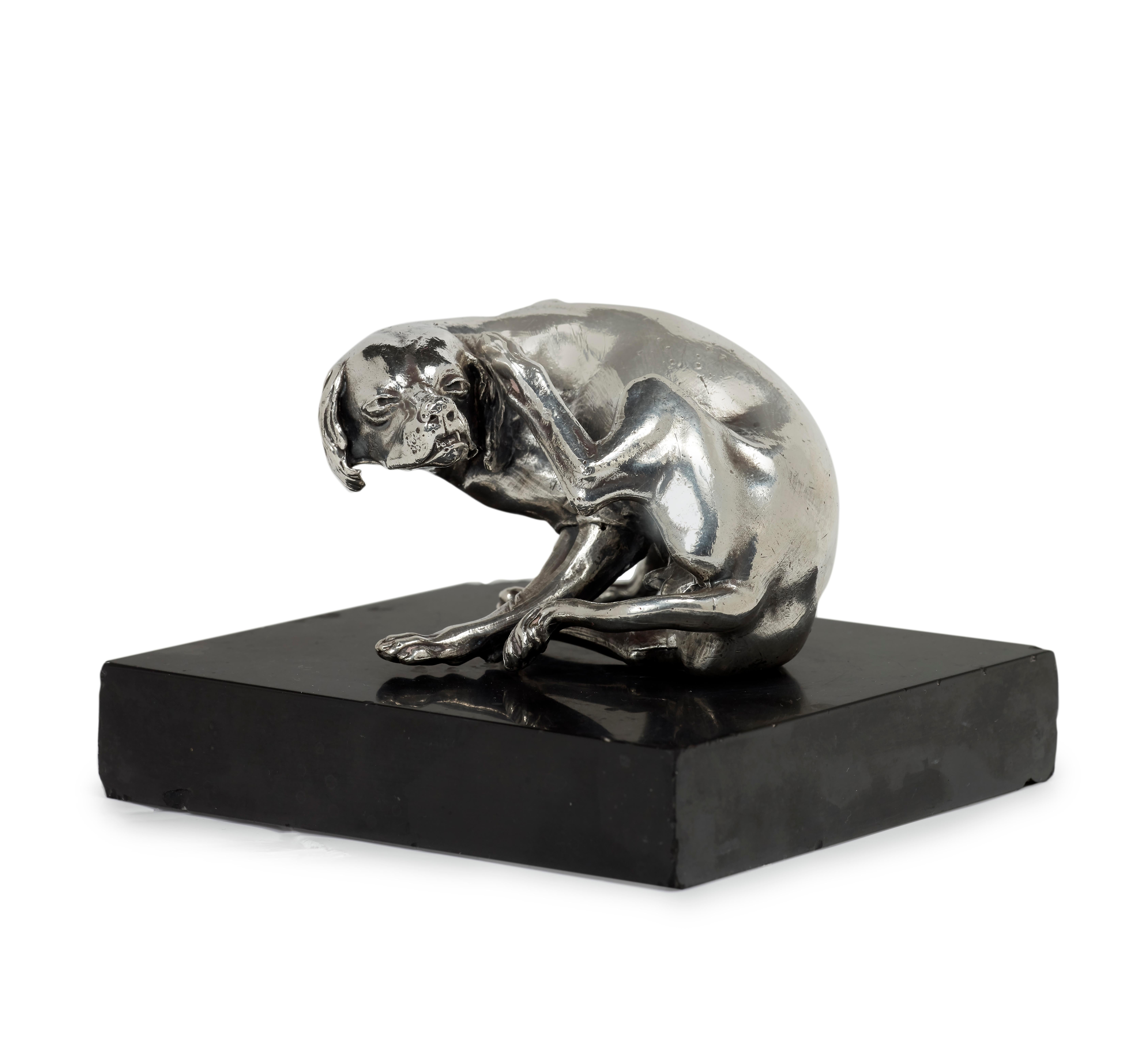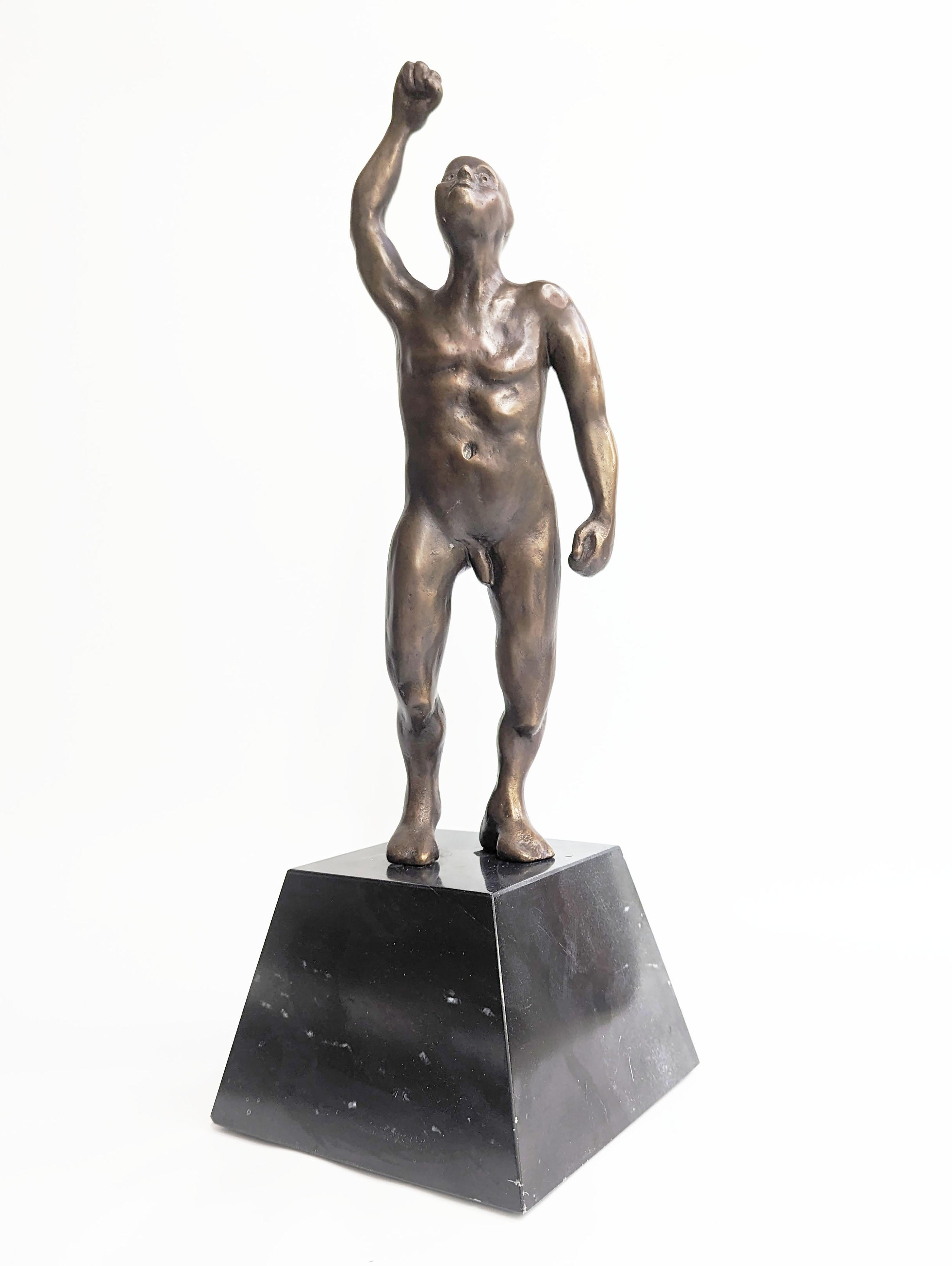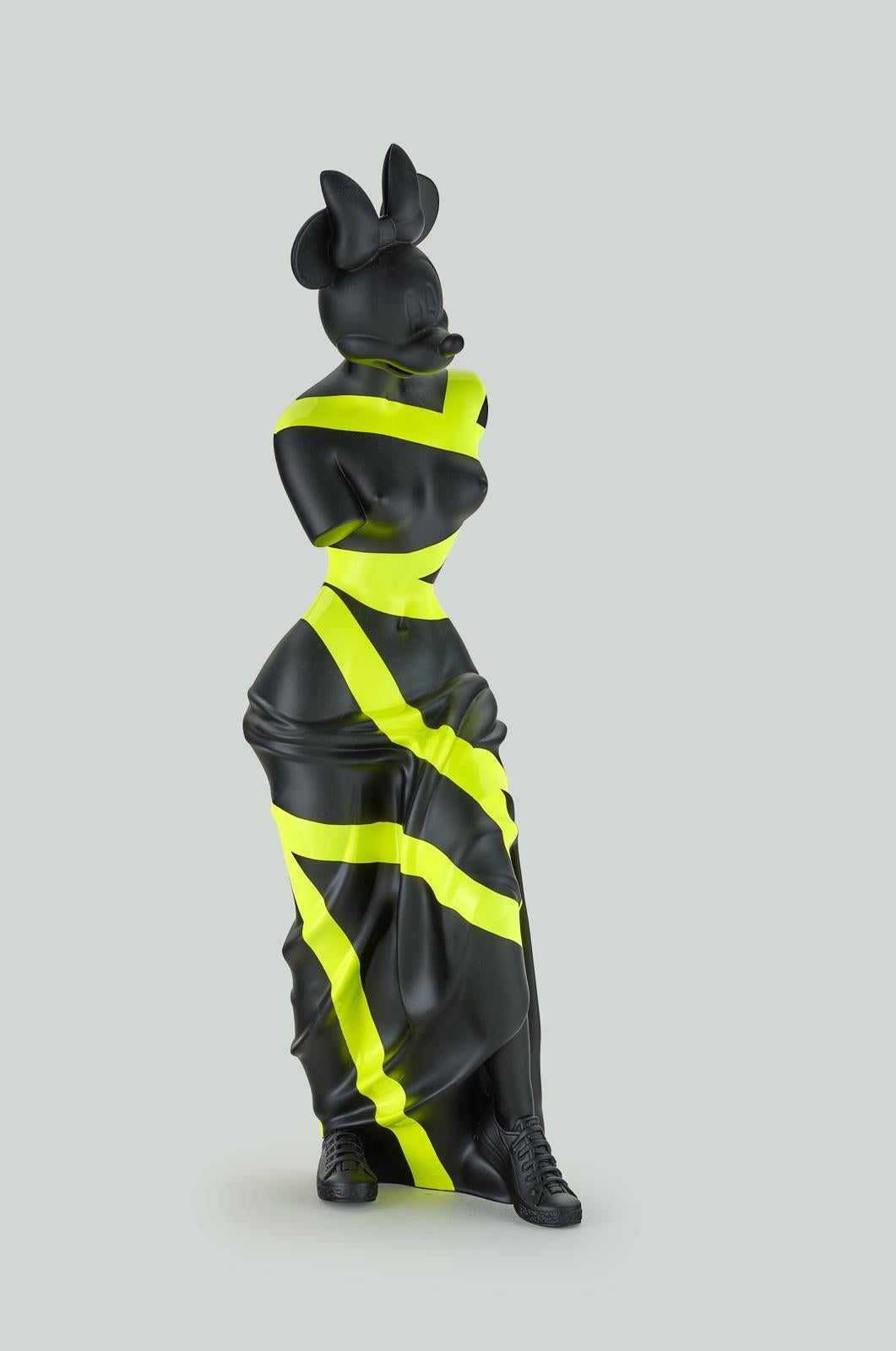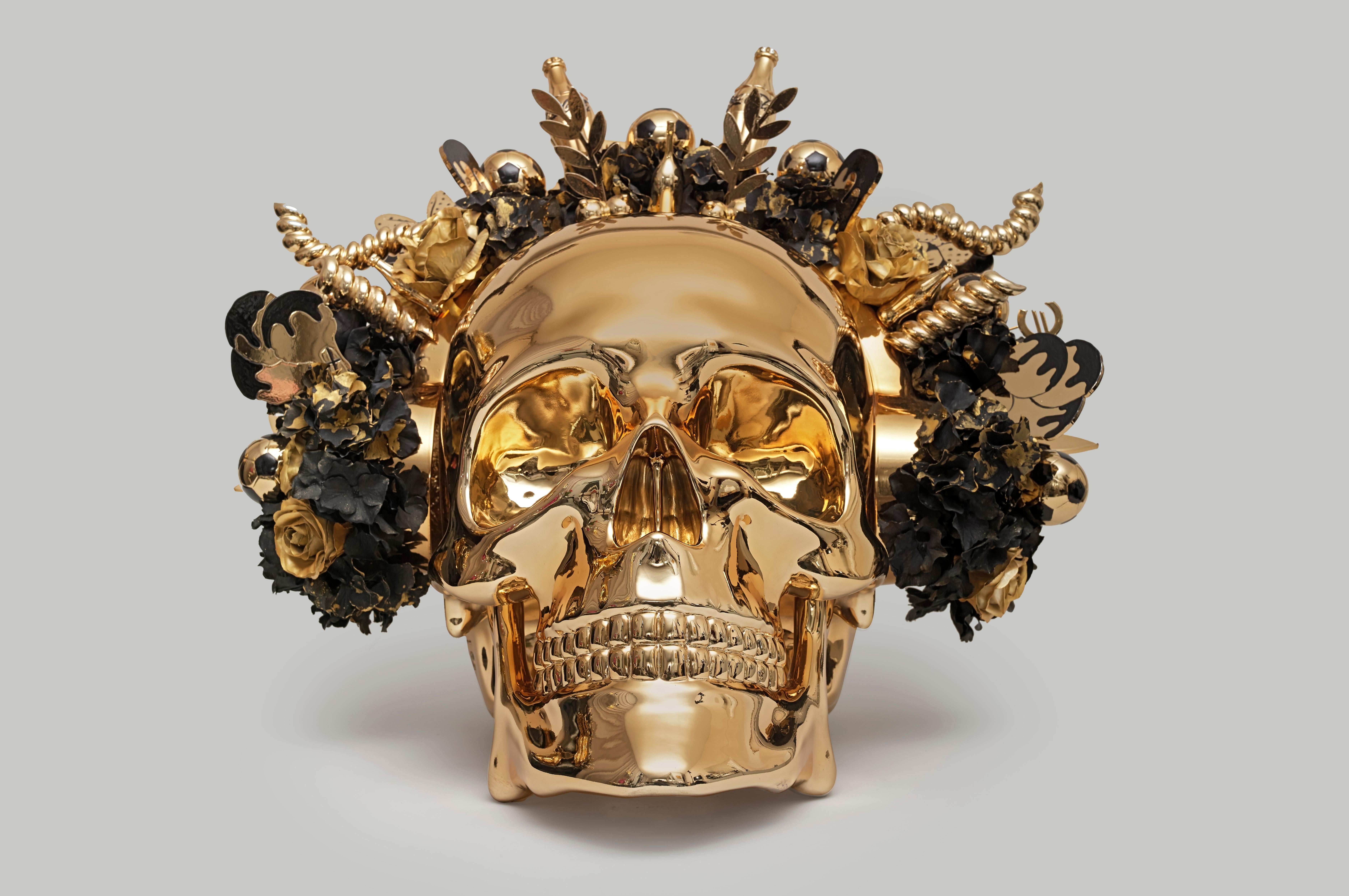Items Similar to Reclining Figure Carved Marble Early 20th Century France
Want more images or videos?
Request additional images or videos from the seller
1 of 6
Reclining Figure Carved Marble Early 20th Century France
About the Item
Circle of Henri-Gaudier-Breska
1891-1915
Reclining Figure
Carved marble
Height 5 inches
Born Henri Alphonse Séraphin Marie Gaudier near Orléans in France, Gaudier-Brzeska started using his hyphenated name in 1910 when he met the Polish writer Sophie Brzeska. They moved to London together in January 1911 and adopted their new names and the identity of brother and sister in order to make their cohabitation respectable.
Gaudier-Brzeska started to establish himself as a sculptor in 1912. Initially influenced heavily by Rodin, he later assimilated more influences from the modernist movement of cubism and from examples of non-European art he saw in London’s museums. He met the sculptor Jacob Epstein in June 1912, who further encouraged him to break with classical Greek tradition.
While working from 25 Winthorpe Road in 1913–14, Gaudier-Brzeska became increasingly involved in London’s avant-garde art scene. He exhibited at the London Salon in July 1913, where he met the poet and arts patron Ezra Pound. Pound described Brzeska as ‘like a well-made young wolf or some soft-moving, bright-eyed wild thing’. Gaudier-Brzeska subsequently became associated with the vorticist movement led by Wyndham Lewis, contributing two important articles to Lewis’s magazine Blast and signing his name against the vorticist manifesto.
He was also a founding member of the London Group, which formed when the all-male Camden Arts Group joined with independent artists to challenge the dominance of the Royal Academy of Arts. Other founding members included Walter Sickert, Robert Bevan and Spencer Gore.
Tragically, Gaudier-Brzeska was killed in action while fighting for France in the First World War. His work and writings influenced a new generation of modern British sculptors, including Henry Moore and Frank Dobson, and he was remembered in Pound’s Gaudier-Brzeska: a Memoir (1916) and HS Ede’s Savage Messiah (1931).
- Dimensions:Height: 5 in (12.7 cm)Width: 8 in (20.32 cm)
- Medium:
- Circle Of:Henri Alphonse Séraphin Marie Gaudier (1891 - 1915, French)
- Period:
- Condition:
- Gallery Location:London, GB
- Reference Number:1stDibs: LU52410982382
About the Seller
5.0
Vetted Seller
These experienced sellers undergo a comprehensive evaluation by our team of in-house experts.
Established in 2007
1stDibs seller since 2014
63 sales on 1stDibs
Typical response time: 2 hours
- ShippingRetrieving quote...Ships From: London, United Kingdom
- Return PolicyA return for this item may be initiated within 14 days of delivery.
More From This SellerView All
- Bronze Head of a Young Boy, Early 20th Century English SculptureLocated in London, GBEnglish School Early 20th Century Head of a Young Boy Bronze with stone base Height: 12 3/4 inches (32.5 cm)Category
Early 20th Century Figurative Sculptures
MaterialsStone, Bronze
- Nude Statue, 20th Century Carved OakLocated in London, GBCarved Oak, 20th Century European School Nude Statue Height: 21 3/4 inchesCategory
20th Century Modern Figurative Sculptures
MaterialsOak
- Hand Carved Wooden Frame, 16th Century European SchoolLocated in London, GBHand Carved Fruit Wood Length: 16 inches (40.5 inches) A striking, richly hand carved frame in high relief. It shows a rich decor of natural organic forms alongside a collection of ...Category
16th Century Figurative Sculptures
MaterialsWood
- Wooden Maquette of a Leg, Hand Carved British SculptureLocated in London, GBHand-carved wooden trunk and plinth Height: 38 1/2 inches (98 cm) Width: 10 1/2 inches (27 cm) Lawson Rudge Lawson Rudge was born in 1936. He is...Category
20th Century Realist Figurative Sculptures
MaterialsWood
- Bust of Frederick William Walker, 19th Century Figurative SculptureLocated in London, GBHope-Pinker was born in Peckham, Surrey, the son of a stonemason and builder employing 5 or 6 men c.1871 in Hove, Sussex, who seems to have taught his son much of his stone-carving skills, although he also attended the Royal Academy Schools (c.1871). Hope-Pinker typically carved without a model from drawings. The bulk of his work was portrait sculpture and John Hunter...Category
19th Century English School Figurative Sculptures
MaterialsBronze
- Lambeth Plate, English Delftware, Blue and White Design c. 1750Located in London, GBEnglish Delftware blue and white plate, painted with a flower and bird design Diameter: 8 3/4 inches (22.25 cm) Delftware is also known as Delft Blue, was originally a general term ...Category
1750s Sculptures
MaterialsCeramic, Delft
You May Also Like
- Portrait of Giuseppe Garibaldi - Original Marble Sculpture - Late 19th CenturyLocated in Roma, ITThis Portrait go Giuseppe Garibaldi is an original decorative marble sculpture realized in Italy by Italian manufacture during the end of the XIX century. The alabaster marble sta...Category
Late 19th Century Modern Figurative Sculptures
MaterialsMarble
- Jean-Baptiste Carpeaux (French, 1827–1875) Marble Bust of "Genie De La Danse"Located in New York, NYJean-Baptiste Carpeaux (French, 1827–1875) White Marble Bust of "Genie De La Danse" (Spirit of the Dance), Late 19th century. Carpeaux was a French sculptor and painter during the...Category
Late 19th Century Figurative Sculptures
MaterialsMarble
- Dog scratching its earLocated in PARIS, FRThis amusing naturalistic sculpture in silver-plated pewter was probably made in the 17th century by Georg Schweigger. Inspired by a model created by another Nuremberg sculptor, Peter Flötner, it bears witness to the persistence during the baroque era of the naturalistic taste that emerged in the Renaissance. Intended as an ornament for some Kunstkammer, or cabinet of curiosities, this sculpture was a great success, as can be seen from the presence of similar works in many European museums. 1. Georg Schweigger Georg Schweigger was a baroque sculptor and medal founder from Nuremberg, known mainly for his small-scale works in stone, carved wood and cast metal. His only large-scale work, the Neptune Fountain, has been in the Petershof Palace, the summer residence of the Tsars near St. Petersburg, since 1797. This monumental sculpture demonstrates his taste for the representation of movement, which we find in this small piece, inspired, as we shall see, by earlier models. 2. The success of a naturalistic theme As is often the case in the history of art, the source of the Dog scratching his ear theme probably comes from an engraving, and more precisely from one made in Strasbourg in 1480 or in Aschaffenburg in 1481 by the Master of the Housebook, an anonymous engraver working in southern Germany at the end of the 15th century. This engraving seems to have been Peter Flötner’s (1490 - 1546) source of inspiration. Peter Flötner was a sculptor and engraver who settled in Nuremberg in 1522. The Louvre Museum also has a gilded lead statuette dated between 1500 and 1515 (on deposit at the Musée de L'Œuvre in Strasbourg), which in turn is thought to have served as a model for other known statuettes. This model was later taken up by the Frenchman Barthélemy Prieur...Category
17th Century Naturalistic Figurative Sculptures
MaterialsMarble, Silver
- Figurative Bronze Sculpture -- VictoryLocated in Troy, NYThis bronze sculpture is a wonderful example of figurative work. On top of a marble base is a bronze nude figure . His body is muscular and athletic. He holds the right hand up in a ...Category
2010s Contemporary Figurative Sculptures
MaterialsMarble, Bronze
- ANNA KARA - Black & yellow MinnieBy Anna KaraLocated in PARIS, FRInformation: Anna is a designer who does everything with hands. She uses resin and marble powder for her creations, and we find on each skull more than 150 details. Born in Armenia i...Category
21st Century and Contemporary Pop Art Figurative Sculptures
MaterialsMarble
- ANNA KARA - La jeunesse doréeBy Anna KaraLocated in PARIS, FRUnique work, more than 140 details , all hand made. About the artist : Anna Kara graduated from the Yerevan College of Fine Arts in Armenia and continued her studies at the Abovyan Pedagogical Institute. Anna Kara revisits classical painting by capturing the vanities. The leitmotivs of finitude, of the fragility of existence (skulls, hourglasses...) are inserted in a contemporary universe denoting. His work plays with ambivalence between death and life...Category
2010s Conceptual Figurative Sculptures
MaterialsMarble
Recently Viewed
View AllMore Ways To Browse
Antique Carved Marble
Carved Figural Sculpture
Marble Figure Sculpture
Marble Figural Sculpture
Antique Marble Sculpture Art Sculptures
French Classical Figurative
Antique Sculpture London
Antique Sculptures London
Marble European Sculpture
Antique Recliner
Antique Recliners
French Reclining
French Recliner
Black Marble Figure
Recline Sculpture
Reclining Sculpture
Two Recliners
Greek Sculpture 20th Century
